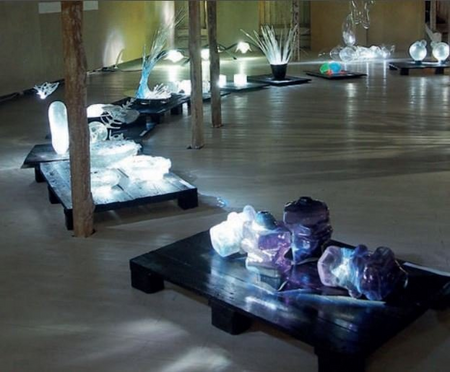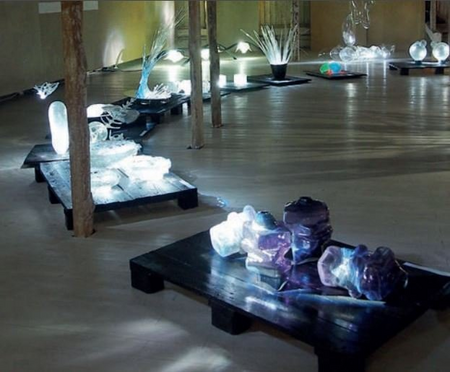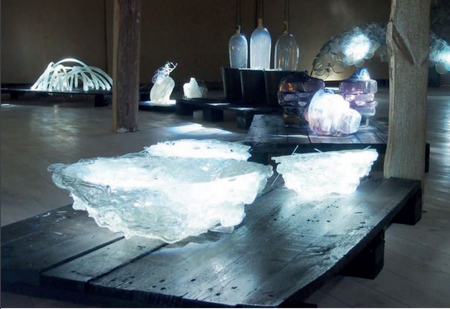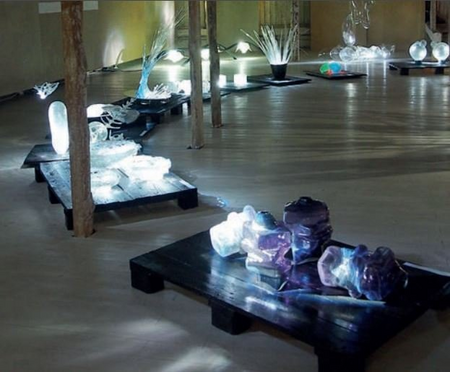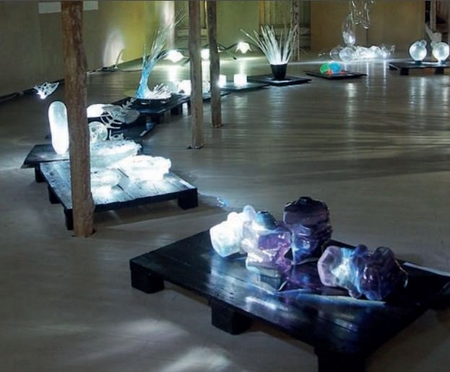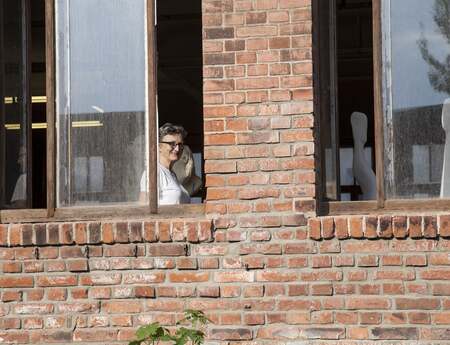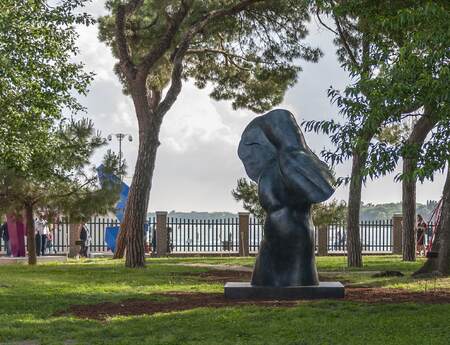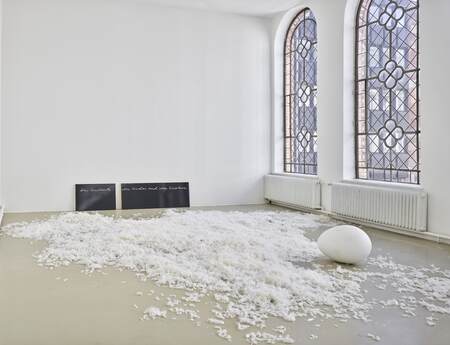Estonian Glass Art in Haapsalu
I arrived in Haapsalu a little too early on Saturday afternoon and surprised Kai Koppel and her daughter who were in the process of preparing the community room for the symposium. I was expected somewhat later yet I was very warmly welcomed and provided with a bicycle with which I took myself off on an exploratory tour.
IN MEMORY OF IVO LILL (1953 - 2019)
Haapsalu is the Estonians nearby health resort and an outright summer location. Wonderfully situated on the coast with a beach, promenade, forest and an old bishop‘s castle in the centre of town. Idyllic and full of mosquitoes. On the main thoroughfare in the city centre is the erstwhile post office, the current Evald Okase Museum, the accommodation for the 12th International Hot Glass Symposium in Haapsalu.
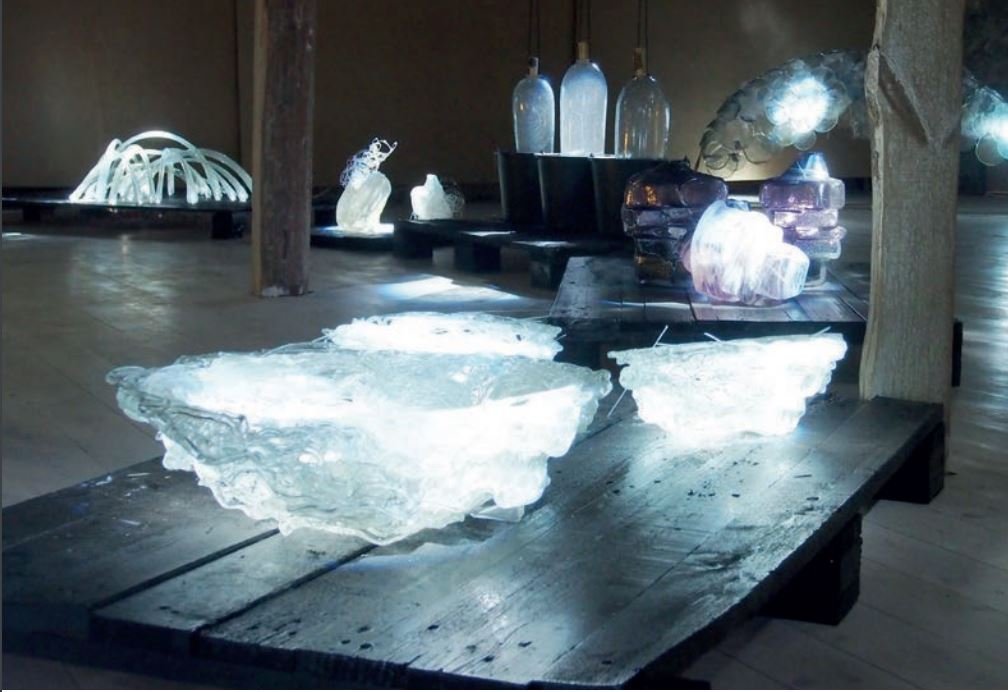
in the background Installation "secret ingredient" from Kati Kerstna, Photo: Louise Lang
The museum was established and is managed by the Evald Okas family, a well known Estonian painter and graphic artist who died in 2011. The family includes Jüri Okas (architect and graphic artist), Mari Roosvalt (painter), Kai Koppel (glass artist) with her daughters Üla Koppel (architect) and Mara Ljutjuk (painter). Evald Okas bought the house in 1999 and his granddaughter Üla Koppel took over the planning for the renovation and design of the museum. The loft and ground floor are used for special changing exhibitions and the first floor contains the Evald Okas permanent collection, displayed in rooms especially created for that purpose. The museum opened in 2003 and is open, in true Haapsalu fashion, during the summer from June to September.
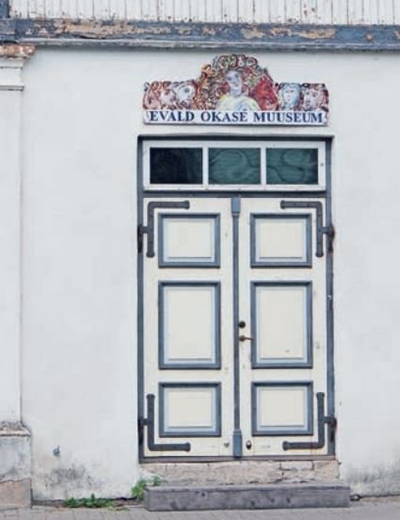
Behind the house there is a garden belonging to the museum containing a furnace, whose location is not totally exposed to the elements. This was originally meant for the first symposium 2003 organised by Kai Koppel in order to get together with all her glass friends, built by the Finn Mikko Merikallio. It is still standing and working and is intermittently fired up for the Haapsalu glass days. Kai Koppel also fired up the studio glass movement in Estonia. In 1991 she founded the first hot glass studio in Estonia with Viivi-Ann Keerdo (Koppel & Keerdo Klaasikoda). At first set up provisionally in the corner of a glass factory and finally, in 1995, within its own four walls in Tallinn‘s old section of town (street: Katariina Käik), where they can still be found. In the meantime there are about a handful of glass studios in Estonia. Different to Germany where the way is usually via a handicraft apprenticeship and maybe thereafter to a college, academy or university, in Estonia it‘s the other way around. Most study at the Estonian Academy of Arts (https://www.artun.ee/en/curricula/glass-art/), at the design faculty glass art and immerse themselves independently in different handicraft techniques.
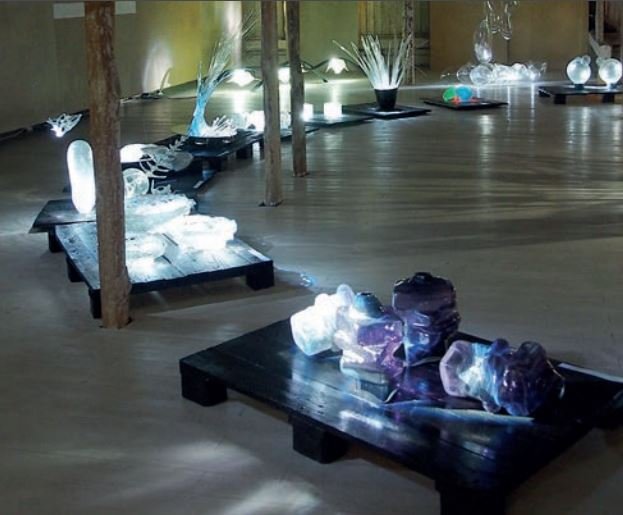
The 12th international symposium in Haapsalu 2019: A week long of glass making, playing, experimenting, creating, watching in one place, that is both protected and open to the public, that contains an energy and creates extraordinary conditions. The outside furnace protected by a roof is a part of that. Due to the open sides wind and weather play a part. The glass is hot over a very long period longer than in the European glass studios. Maybe comparable to glass in Japanese studios.
More information on and about the symposium can be found on the facebook side (Haapsalu Glass Days) and on the Evald Okase Museums homepage www.evaldokasemuseum.ee.
Author: Louise Lang
This article was published as part of our cooperation with GLASHAUS – Internationales Magazin für Studioglas 4/2019.
